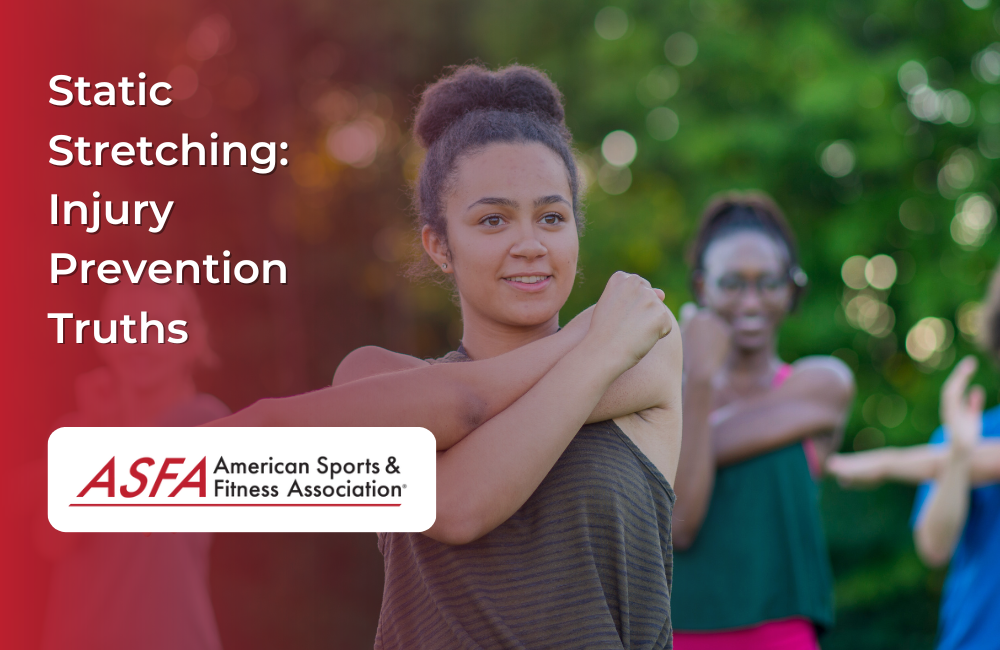Static stretching, characterized by holding a stretch in a stationary position for an extended period, has been a staple of warm-up and cool-down routines for decades. It's often seen as a go-to method for improving flexibility and preventing injuries. However, in recent years, there has been a shift in understanding the role of static stretching in injury prevention and athletic performance. In this guide, we'll explore the truths and myths surrounding static stretching, its potential benefits, and how to incorporate it effectively into your fitness routine.
Myth 1: Static Stretching Prevents Injuries
Truth: While static stretching can improve flexibility, it may not be the most effective method for preventing injuries. In fact, some studies suggest that static stretching immediately before physical activity may decrease muscle strength and power, which could potentially increase the risk of injury.
How to Use Static Stretching: If you choose to include static stretching in your routine, do it after your workout or as a separate flexibility-focused session. This can help improve your range of motion without negatively affecting your performance.
Myth 2: Static Stretching Should Be Done Before Exercise
Truth: Static stretching as a warm-up before exercise may not be ideal. Holding static stretches can temporarily reduce muscle tension, which could decrease muscle performance and power output during activities that require strength and speed. However, dynamic stretching (active movements that mimic the exercise you'll be doing) is a more suitable warm-up method.
How to Use Static Stretching: If you prefer static stretching, save it for after your workout or include it in a separate flexibility routine.
Myth 3: Static Stretching Is Always Harmful
Truth: Static stretching is not inherently harmful; it just needs to be used appropriately. It can be beneficial for improving flexibility, especially when performed regularly as part of a well-rounded fitness program. However, doing extreme static stretches or bouncing while stretching (ballistic stretching) can lead to injury.
How to Use Static Stretching: Incorporate static stretching into your routine as a way to increase flexibility and reduce muscle tension. Focus on gentle, controlled stretches, holding each position for 15-30 seconds.
Myth 4: Static Stretching Is Ineffective for Improving Flexibility
Truth: Static stretching is effective for improving flexibility when done correctly and consistently. Regular stretching helps lengthen muscles and increase range of motion in joints.
How to Use Static Stretching: Include static stretching in your post-workout routine or as a separate flexibility session. Target major muscle groups and hold each stretch for an appropriate duration.
Myth 5: You Should Feel Pain While Stretching
Truth: Stretching should not be painful. While you may feel mild discomfort or tension when stretching, you should never push your body to the point of pain. Overstretching can lead to injury.
How to Use Static Stretching: Stretch to the point of mild tension, not pain. If a stretch becomes painful, ease off immediately.
Myth 6: You Only Need to Stretch Problem Areas
Truth: It's important to maintain balance in your flexibility. While you may have specific areas that feel tight, neglecting other muscle groups can lead to imbalances and potential injuries. A well-rounded stretching routine should target major muscle groups.
How to Use Static Stretching: Include stretches for all major muscle groups, even if you don't feel tightness in those areas.
Myth 7: Static Stretching Is the Only Form of Stretching
Truth: There are various stretching techniques, each with its own benefits. In addition to static stretching, consider incorporating dynamic stretching, proprioceptive neuromuscular facilitation (PNF) stretching, and ballistic stretching into your flexibility routine.
How to Use Static Stretching: Experiment with different stretching methods to find what works best for your body and fitness goals.
Myth 8: Holding a Stretch Longer Is Always Better
Truth: Holding a stretch for an extended period is not always better. Research suggests that 15-30 seconds per stretch is sufficient for most people. Longer durations may not provide significant additional benefits.
How to Use Static Stretching: Aim for 15-30 seconds per stretch, focusing on proper form and controlled movements.
Conclusion
Static stretching is a valuable tool for improving flexibility and reducing muscle tension when used appropriately. To maximize its benefits and minimize potential risks, consider the following guidelines:
- Include static stretching as part of your post-workout routine or in separate flexibility sessions.
- Avoid static stretching as a warm-up before intense physical activity; opt for dynamic stretching instead.
- Focus on controlled, gentle stretches that target major muscle groups.
- Never push your body to the point of pain while stretching.
- Maintain balance in your flexibility routine by targeting all major muscle groups.
- Explore different stretching techniques to find what works best for your body.
By understanding the truths and myths surrounding static stretching, you can make informed decisions about when and how to incorporate it into your fitness routine, ultimately promoting better flexibility and reducing the risk of injury.





